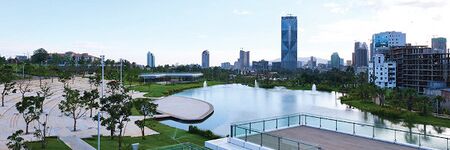Addis Ababa
- Members
Addis Ababa also known by its original name Finfinne (lit. "natural spring"), is the capital and largest city of Ethiopia. It also serves as the regional capital of Oromia. In the 2007 census, the city's population was estimated to be 2,739,551 inhabitants. Addis Ababa is a highly developed and important cultural, artistic, and financial centre of Ethiopia.
Activities

|
World Smart Sustainable Cities Organization WeGO | |
| The World Smart Sustainable Cities Organization (WeGO), established by 50 founding member cities in 2010, is an international association of city and other local governments, smart tech solution providers, and national and regional institutions committed to the transformation of cities into smart sustainable cities.
A diverse range of activities include capacity building programs, sessions and smart city conferences and study visits, feasibility studies and pilot projects, expos and exhibitions, smart city guidelines and best practice catalogs. | ||
Details
Addis Ababa was depicted as a fortified place called "Barara" in the 15th century. Barara was immediately plundered by Adalite general Ahmad ibn Ibrahim al-Ghazi (Ahmed Gran) following his army entrapment in 1529 amidst a war against the Ethiopian medieval army. Founding history of Addis Ababa dates back in late 19th-century by Menelik II, Negus of Shewa, in 1886 after finding Mount Entoto unpleasant two years prior. At the time, the city was a resort town; its large mineral spring abundance attracted nobilities of the empire, led them to establish permanent settlement. It also attracted many members of the working classes — including artisans and merchants — and foreign visitors. Menelik II then formed his imperial palace in 1887. Addis Ababa became the empire's capital in 1889, and subsequently international embassies were opened. Addis Ababa urban development began at the beginning of the 20th century, and without any preplanning.
In 2005 general election, the government postulated to plan urban focused development. Many programs were designated, including Urban Development Policy of Ethiopia, and Accelerated and Sustained Development Policy of Ethiopia (PASDEP) which aimed "the main driving force of national development" within five years. For the next decade, the policy allowed wide-scale development into transforming the city.

